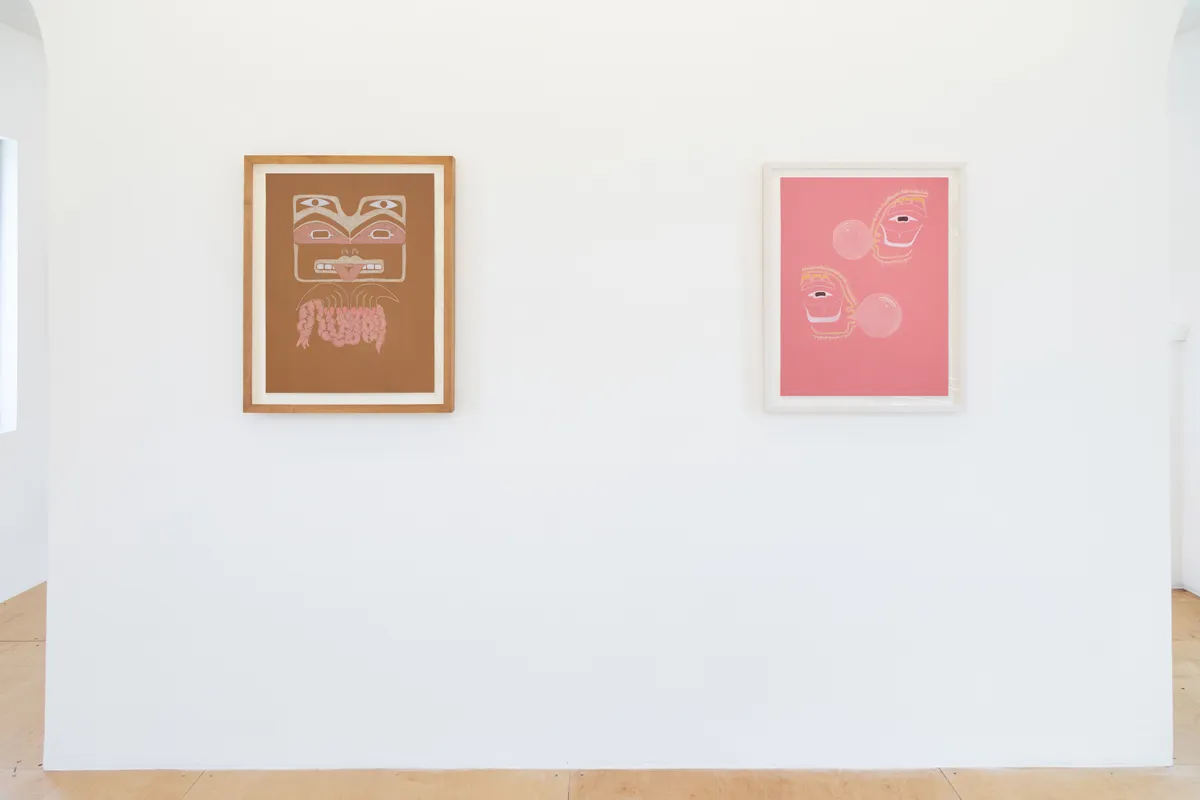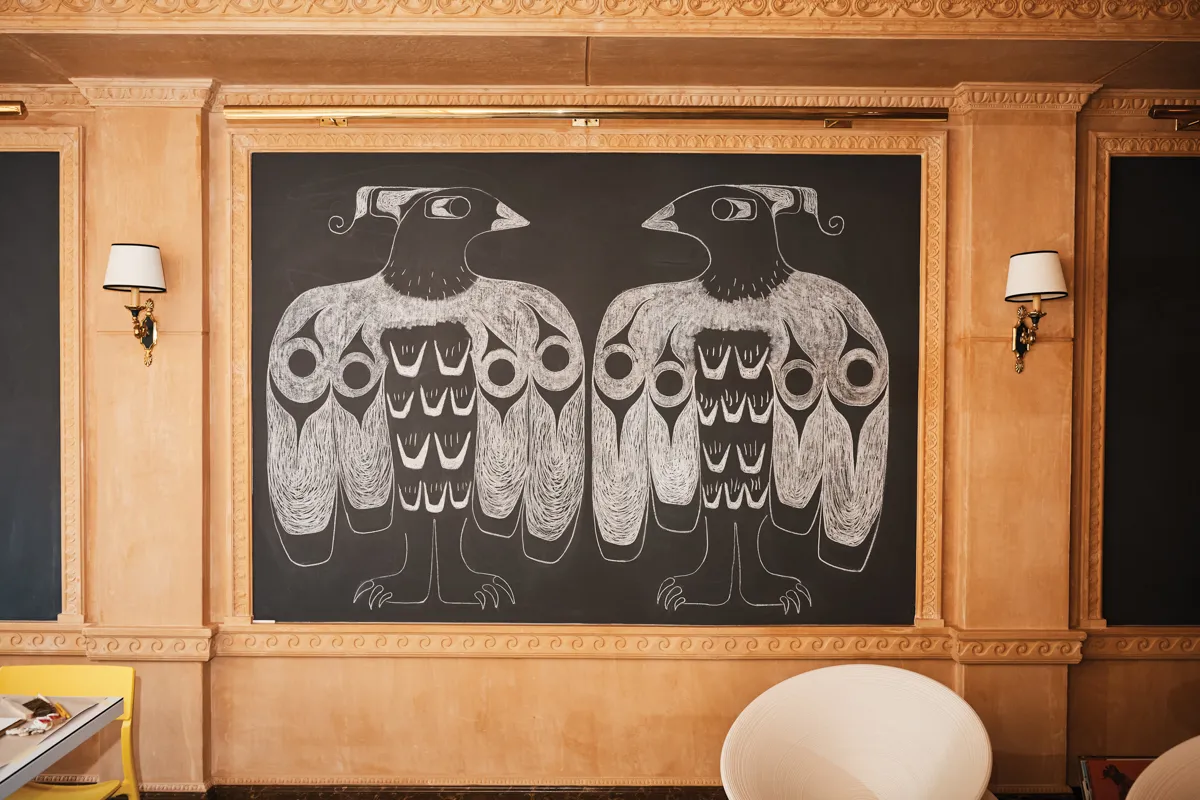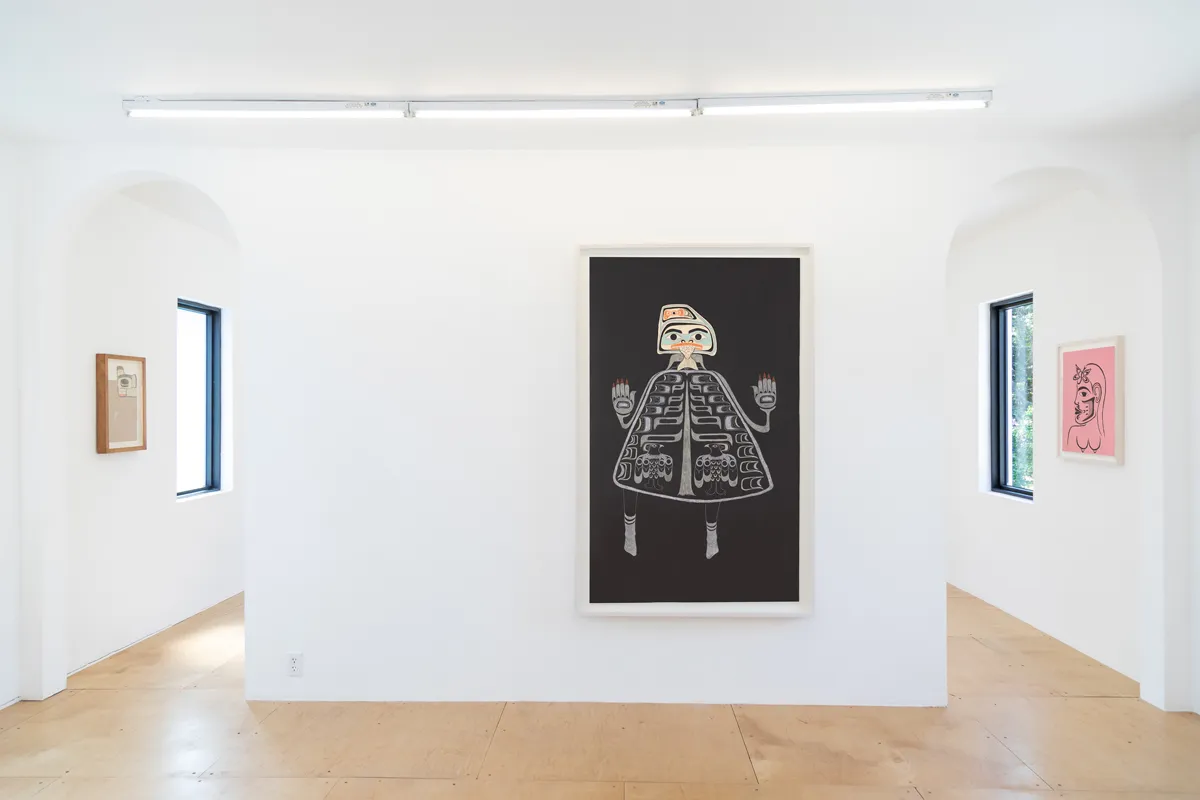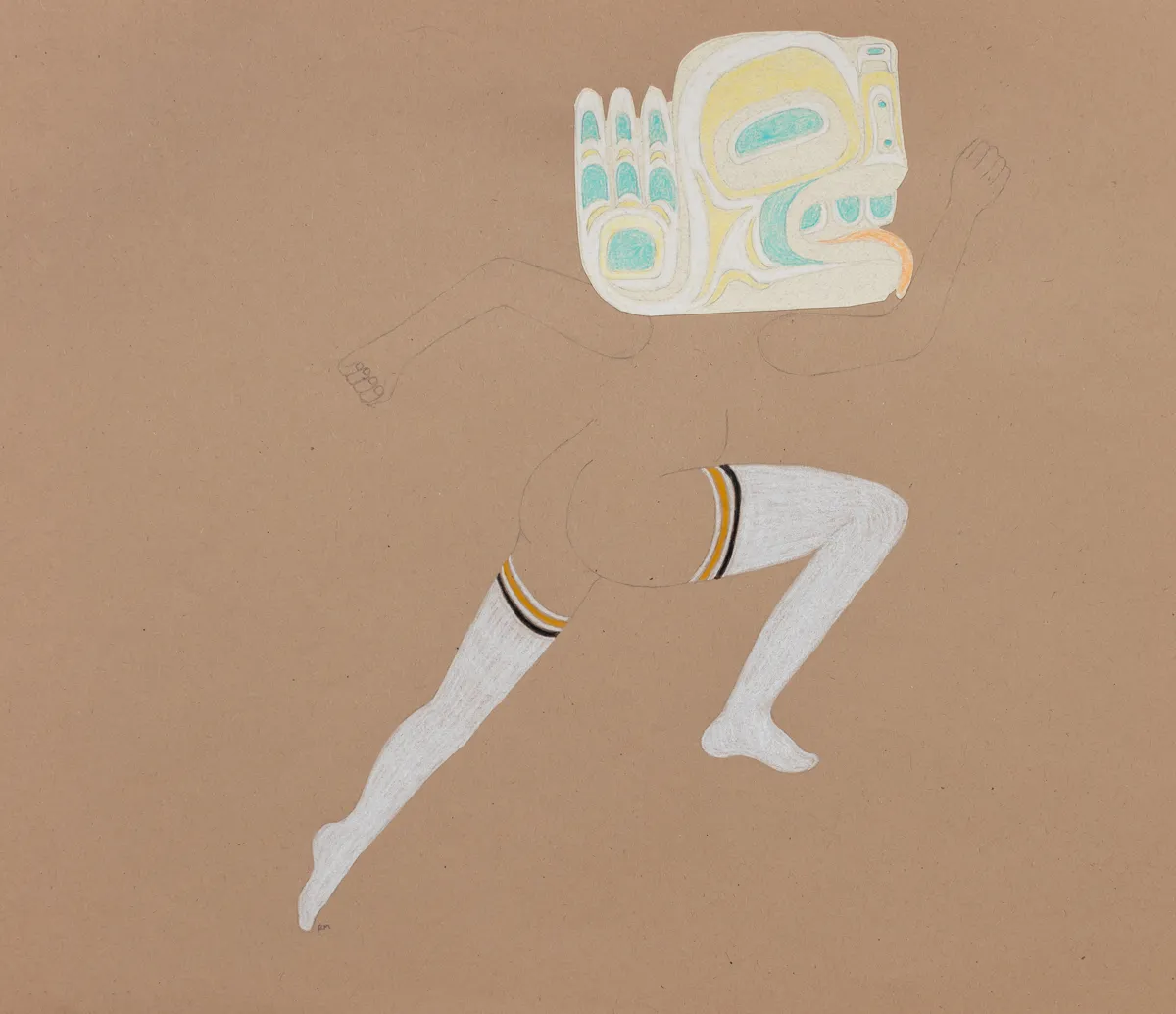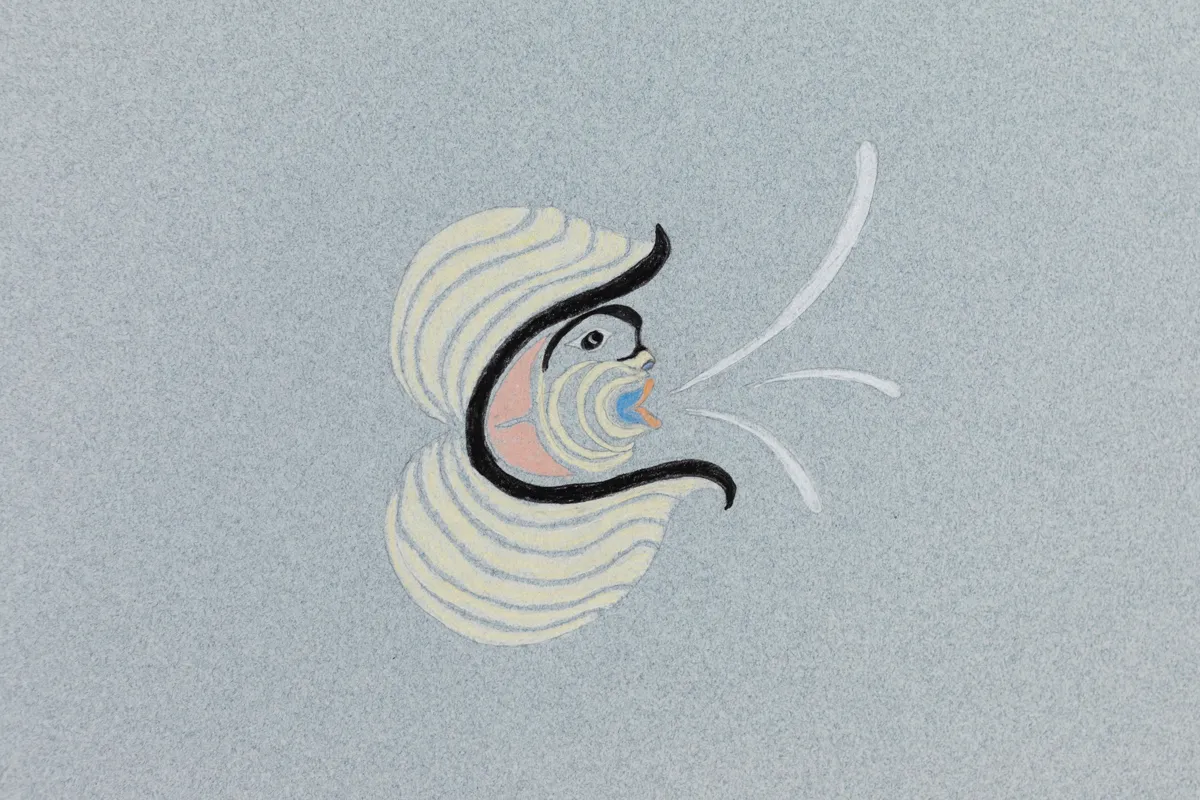Rachel Martin’s Humorous Art Filters Indigeneity and Femininity into Sly Drawings Grounded in Centuries-Old Techniques
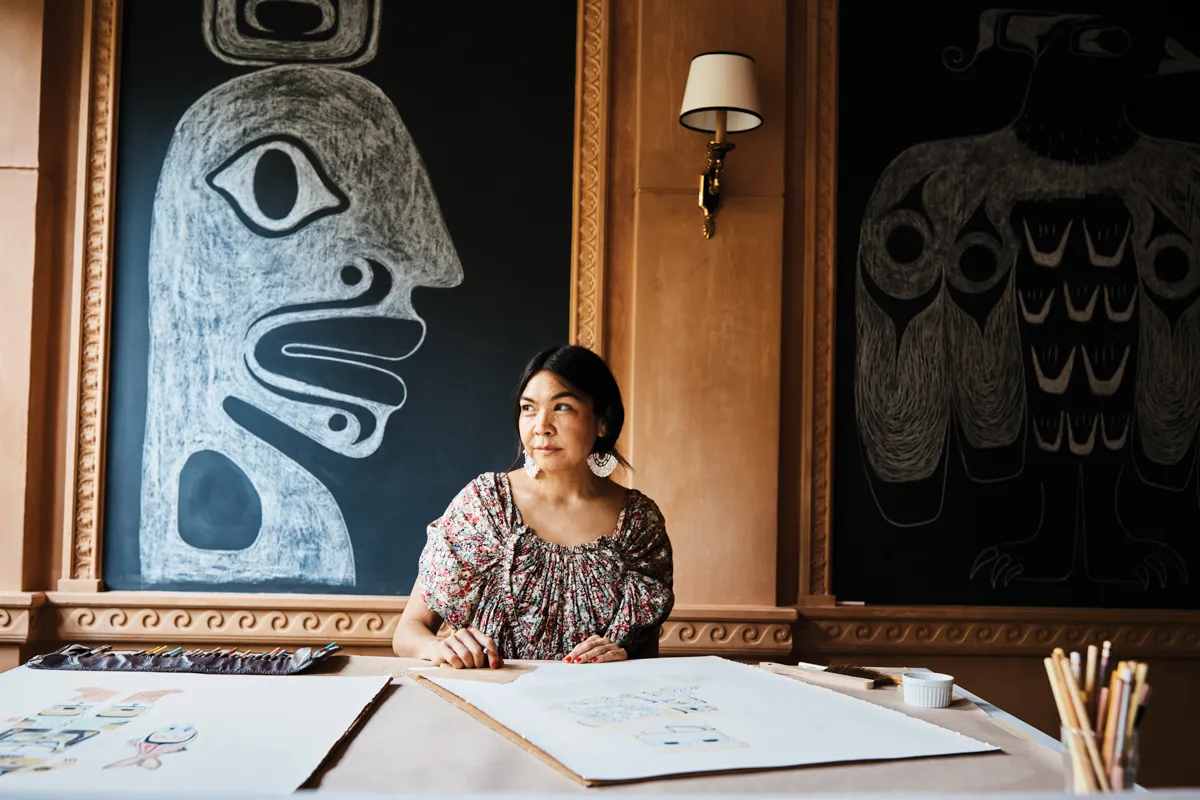
by Salomé Gómez-Upegui
In one of artist Rachel Martin’s earliest memories, her mother had asked her to draw the face of a bug. “I was about three years old, and I remember her saying to me, ‘Show me how it feels to look at it,’ rather than how it looks, and I think that’s how I make art now,” Martin recently told ARTnews.
Indeed, the rising Tlingít artist, who is an enrolled member of the Tsaagweideí, Killer Whale Clan, of the Yellow Cedar House (X̱aai Hit´) Eagle Moiety and grew up between California and the Fort Peck Indian Reservation in Montana, creates works, primarily in sculpture and drawing, that conjure feelings of delight and curiosity meant to spark deep thinking about Indigenous sovereignty, identity, and feminism. Her often amusing pieces meld historical symbolism with modern motifs, seeking to honor her Tlingít heritage while considering her lived experience as an Indigenous woman now based in Queens, New York.
In a 2024 work, Culture Bear(er) Flex, for instance, Martin draws a figure in formline—a traditional style of Northwest Coast Indigenous artists—with stylish long pink nails that grasp a strand of braided rose-colored seal guts (a quintessential Tlingít delicacy). Other works, like Bubbleyum Babybreath (2023), of two figures blowing bubblegum, or the 2023 portrait Hú áwé awsikóo (that one knows), similarly use pink as their main palette. But this is no mere nod to Western ideals about femininity. “Pink is a huge part of our culture, and I love when people realize the pink in my work is actually a reference to guts and blood,” Martin said.
“Formline is a very ancient visual practice,” said Caitlin Chaisson, a New York–based curator who included one of Martin’s pieces in “The House Edge,” a 2023 exhibition about the economic dimensions of Indigenous sovereignty at The 8th Floor in New York. “It’s over 2,000 years old, and Rachel’s work asks how formline represents a breast, a hair bow, or a gel nail. It’s formline meets feminism in a really powerful way.”
In the past three years, Martin’s tender drawings have received increased attention for their ability to tackle pressing subjects, such as gender equality, colonialism, food sovereignty, and self-determination, in profound yet lighthearted ways. In 2021, she was an artist-in-residence at the Anchorage Museum in Alaska, and she has been an artist-in-residence and co-curator of the Gochman Family Collection since 2022. Her commissioned mural, The Gochman Family Chalk Drawings (2022), is a centerpiece in the family’s Upper East Side apartment and the first work to enter the collection. Last year, she was selected as a fellow of the Forge Project in Upstate New York, had a solo show at Timothy Hawkinson Gallery in Los Angeles, and had four works included in the acclaimed survey “Indian Theater: Native Performance, Art, and Self-Determination Since 1969” at the Hessel Museum of Art at CCS Bard.
This year has two solo shows in store for Martin, one in September at Hannah Traore Gallery in New York, where she’ll be presenting a new body of larger works, and the recently closed, “Believe the Rumors,” at Nina Johnson Gallery in Miami. The latter exhibition presented a series of works on paper that pay homage to the oral traditions of Indigenous women who have turned to whispers and so-called gossip to communicate and protect themselves.
Martin spent most of her 20s making art as a pastime. She began a BFA in painting at Otis College of Art and Design in Los Angeles but quit after two semesters and moved to Vancouver with her then-partner. “My work has the depth of authentic life experiences—of a person who quit school over love and traveled the world with no money,” Martin said, beginning to laugh. “There’s a mischief that comes from working outside the established systems, and I wouldn’t change my journey for the world.”
It was only in her early 30s that Martin seriously considered becoming a professional artist. This change of heart coincided with her reconnecting with her father and her Tlingít heritage; Martin had been estranged from her father since her early childhood when she and her mother left Fort Peck.
Around five years ago, after she had already started formally learning the Tlingít language, Martin began to strongly incorporate elements of her Indigenous background into her work. “When I started exploring that part of my identity and embracing it, everything came full circle,” she said.
Chaisson, the curator, pointed out that while Martin has embraced the techniques of formline in her practice, she’s also moved away from the ideals of perfection that have traditionally defined most formline. “Formline artwork is often held to very high expectations of precision, and superb, impeccable craftsmanship, but there is a freedom to how Martin utilizes it. You can see it in her mark-making, composition, and subject matter. She embraces the imperfections of the hand-drawn image, and in turn demonstrates how flaws can and should be understood as making a contribution to the dialogue of the tradition,” Chaisson added.
In creating these works, Martin sees herself as a channel for her ancestors’ messages. “The truth is that these images present themselves to me. These are my ancestors speaking to me. When I’m working, I usually don’t know what the work is trying to say, and then it completely makes sense, and I understand that it needs to go into the world because it’s a story that’s important,” she said.
A great deal of the stories that Martin shares in her works feature humorous undertones, a mechanism used by the artist to make important conversations about Indigenous culture more accessible to a wider audience.
In pieces like BEEN READY (2023), Martin introduces elements of playfulness into the work by collaging a cut-out drawing of a traditional Tlingít mask onto another drawing of a body, nude save for a pair of white thigh-high socks, in a running position. Meant to represent the figure’s connection to the spirit world, the mask has also been altered, with Martin adding a stuck-out tongue as a way to bring into the drawing a certain trickster energy and even a bit of lighthearted competition.
“Using humor is a way of humanizing Indigenous work—we’re hilarious,” Martin said. “We love the idea of bringing everybody together through laughter, which in our language also means ‘sharing breath’—creating bonding moments. If you can make everybody laugh or say something that’s funny, it’s unifying.”
Her use of humor is also a way to a side of Indigenous art outside of “totem poles or other racist tropes,” Martin said. By pushing these boundaries, the artist hopes to provide an alternate view of what Indigenous art can be while inspiring a new generation of Northwest Coast female artists.
“I ignored my work for a long time, and it’s one of those things I don’t want the younger generation of women to do. If you are seeing this work, if you’re feeling this work, then follow it, follow up with it, listen to it,” she said.
In her own life, Martin sees this act of listening as an ongoing practice. “I’ve matured enough to listen,” she said. “And now that I’m listening, I know it’s important to pass down these stories and not simply hold on to them or be embarrassed. I’m celebrating my relationship with the spirit world, and there’s joy there, but there’s also work to be done.”
Read the article online on ARTnews.
